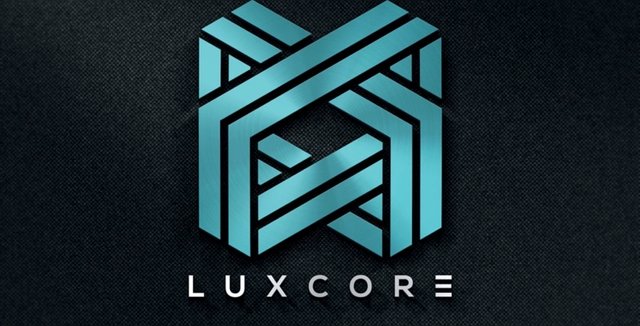
In today’s day and age, with the plethora of data breaches happening right and left, it seems like privacy and security are officially a thing of the past. Several blockchain solutions and applications have set out to solve the issues related to privacy and security over the internet, and one that’s emerging here in 2018 is LuxCoin, as part of the Luxcore blockchain project.
LuxCoin promotes technology used in their system that sounds very foreign to those that aren’t immersed in the tech world, and can even start to get confusing for people that have been around cryptocurrency for a while. So in this guide, we’ll explain some of the features and technology used by LuxCoin, and share some background on the cryptocurrency project.
LuxCoin Background
LuxCoin (LUX) is the open source cryptocurrency supporting the blockchain for the encompassing blockchain project called Luxcore. Luxcore’s blockchain applications are focused on providing services for the enterprise consumer and are developing a platform to provide out-of-the-box corporate privacy and security products.
Bridging the gap and providing state of the art security and privacy solutions to both large enterprise customers and the average consumer is a tall task. LuxCoin is designed to incorporate governments and institutions into the mix as a way of providing verified trust and security in the blockchain’s supporting network.
LuxCoin Mining
LUX is the Latin word for ‘light,’ and they heavily promote the efficiency of their mining algorithms. Their primary focus concerning mining is using a blend of proof-of-work and proof-of-stake protocols to allow for a distribution of staked rewards, regardless of the amount of LUX tokens the users is staking. They refer to this as ‘Proof of Stake 2.’ Under this new method, the staking system is static rather than dynamic, which means that you can mine around the clock if the LuxCoin wallet is open and holds tokens.
LuxCoin also boasts a new algorithm that’s supposedly ultra secure and requires very little power and electricity to operate and mine the blockchain network. The PHI1612 algorithm they use is a combination of a variety of other crypto related algorithms: Skein, Jh, Cubehash, Fugue, Gost, and Echo.
LuxCoin claims that the PHI1612 algorithm is one of the more secure encryption algorithms that are available. On top of that, they claim it’s friendly towards GPUs and helps make the mining process more efficient by increasing hash rates without requiring an increase in power consumption. The goal behind using this ASIC resistant algorithm is to keep big mining operations from dominating the blockchain and token’s mining process. The objective is to keep the network from becoming too centralized through the mining process.
Parallel Masternodes
LuxCoin applies the Masternode feature to their blockchain in a unique way, with Parallel Masternodes (PMN) playing a huge part in the network. This technology helps the network maintain the security and reliability required by large enterprise and institutions. The SAM Protocol and i2pd technology are both used to build and develop the PMNs and ensure that security is baked in from the start. Any transaction facilitated through the PMN is encrypted and secured.
The Parallel Masternode feature will also allow enterprise users to create their applications using the Luxcore blockchain. It’s geared towards large-scale use, so enterprise and institutions will be the primary users. From the Luxcore team:
“The Parallel Masternodes will only be available to verified and vetted business and government institutions and will act as a secure information gateway on the blockchain. Any wallet or transaction on the Parallel Masternode will be encrypted with the IP addresses auto-changed. These wallets and transactions are invisible to prying eyes to meet institutional security prerequisites.”
LuxGate
LuxGate is a feature of the Luxcore system that is intended to bridge the gap between different blockchains and enable them to communicate with one another effectively. For example, LuxGate is designed to allow the Bitcoin and Ethereum blockchains to engage each other and share information from their separate blockchains.
This bridge between different blockchains can help centralized organizations interact with each other on their blockchains. So for example, banking institutions using the Parallel Masternodes private network can share information and effectively integrate their blockchain networks to stay up to date. With the ability to operate cross-network and LuxGate being system agnostic, the blockchain solution can be implemented virtually anywhere.
Luxcore is working to get these features enabled on their platform so enterprise and institutions can leverage the PMN and LuxGate features to the maximum benefit. They share how the technology could be used in a banking scenario:
“LuxGate and PMN to strengthen two layers of differing safety algorithms to be unified at a combined strength level.
From a use case perspective, if an institution has two layers of firewall security A & B, with each layer of different security strength, with A at 300 points and B at 200 points (a total of 500), with PMN enabled, each level will have a combined strength of 500, bringing the total difficulty to 1000 points.
LuxGate and PMN products are currently work in progress and are expected to be ready for stress testing in Q2-Q3 2018.”
LuxCoin Trading Information
LuxCoin didn’t participate in the whole Initial Coin Offering hype. Instead of an ICO, they performed a ‘pre-mine’ of their tokens, allowing miners to mine 5% of the total currency supply to get the initial token supply generated.
LuxCoin trades primarily on the crypto exchange Coinbene, with over 99% of its trading volume on the exchange platform.
If you’re considering purchasing any LuxCoin tokens, you should make sure you fully understand the technology involved, and how it’s going to solve these key security and privacy issues. To review more information about LuxCoin and the company behind it, check out the various publicly accessible resources:
Final Thoughts
When first hearing about LuxCoin and reading about all of the privacy and security-focused technology the company is implementing, the project sounds exciting and revolutionary. However, when you review the various features, technology and algorithm Luxcore is building into their blockchain platform and solutions, they are using a lot of uncommon and speculative tools to claim maximum security and privacy.
LuxCoin can sometimes read like one of those technology products that’s too good to be true. Anyone looking to invest in this token needs to make sure they research the technology involved, including the PHI1612 algorithm, SAM protocol, i2pd technology, the Parallel Masternodes, and their new Proof of Stake 2 method for mining their blockchain.
When you take a look at LuxCoin’s market cap, it’s pretty weak at just over $13 million. This is a very speculative play on the cryptocurrency markets, as LuxCoin’s technology isn’t very commonplace or typical, and the amount of investment currently in the coin is reflecting the suspicious nature of the team’s claims.
In a market that’s saturated with new cryptocurrency projects and tokens making their way onto crypto exchanges, it’s important to vet the companies and technologies behind the virtual currency and determine the ones best situated to succeed in this new highly competitive environment.
This article was brought to you by MintDice's Bitcoin Dice game. Originally posted on MintDice.com.

Have you set up any masternode coins yourself? If so, which ones?
Downvoting a post can decrease pending rewards and make it less visible. Common reasons:
Submit